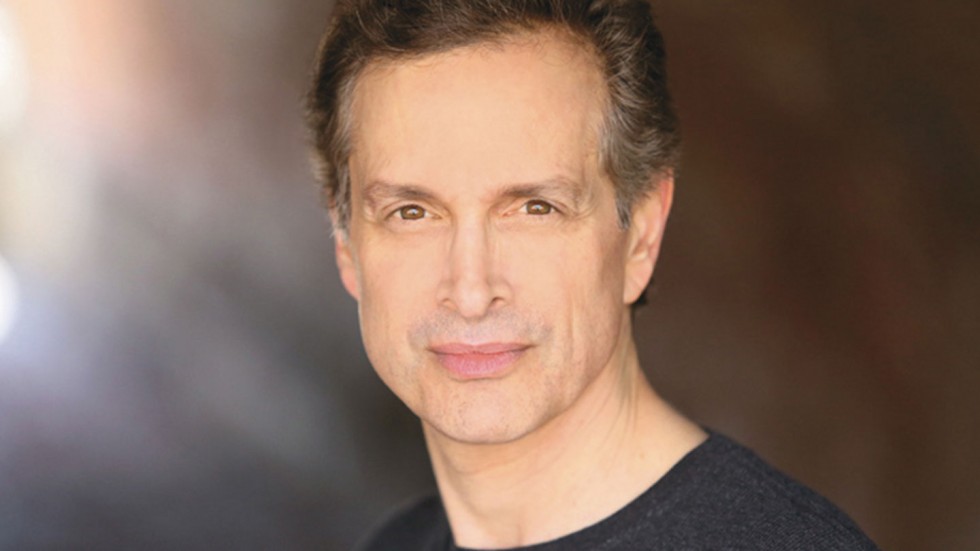The Garden Crew
How Writer-in-Residence P.F. Kluge ’64 and his wife, Pamela Hollie, became surrogate parents to a generation…
Read The StoryAfter sending in a letter to the editor, reading actor, director, writer and teacher Scott Klavan ‘79 shares more of his life story.

Scott Klavan ’79 is an actor, director, writer and teacher, who worked for more than 20 years as the personal script reader for Paul Newman and Joanne Woodward. Reading Newman’s 2022 memoir, he was moved by how much Newman enjoyed his days as a student at Kenyon after his return from service in World War II. “We know how much Newman meant to Kenyon, but I didn’t realize how much the school meant to him,” Klavan said. “He was just a guy then, running around and creating havoc with his college pals, free to find his way in life. Before he became a ‘legend,’ scrutinized and idolized, interpreted, misinterpreted, by the world.”
What did you major in at Kenyon?
I was a drama major, and Thomas Turgeon was one of my favorite teachers. He was very sharp, welcoming and funny. I acted in many plays he directed, learning the rudiments of theater, and even came back to Kenyon in 1988 and per-formed with Tom in David Mamet’s play, “A Life In The Theater,” directed by Harlene Marley, who I was also close with.
Tell me about your career trajectory.
After Kenyon, I worked as a young actor on soap operas in New York and small plays, while doing survival jobs like being a gardener’s assistant and working in a real estate office. Then, just as I was getting going, I was injured in a fight scene in a major film and my career got sidetracked. But I kept on acting, doing plays in regional theater, and started directing and writing as well. (In recent years, I have written theater reviews for Escape Into Life, an arts journal edited by Kathleen Kirk ’79.) I became a script reader and consultant for movie and theater companies and then worked in the early days of drama therapy, leading therapeu-tic groups for teenagers and then, as now, senior citizens.
How did your impressions of Paul Newman change after meeting him?
I grew up a huge Paul Newman fan, along with the other Method guys of the Post-War period: Brando, George C. Scott, et al. I saw all of Paul’s films and viewed him as a movie star and kind of an ideal person. I also appreciated the fact that he was half-Jewish and didn’t hide it. I met Paul when I was cast in the play “C.C. Pyle & The Bunion Derby,” by Michael Cristofer, which Paul directed at Kenyon. I have to say I was pretty much amazed to be working with him at school. During rehearsal, he would give me a direction and I would be in my head, thinking: “Paul Newman is talking to me. He’s talking to me!” and didn’t hear a word he said. But he treated all the kids kindly, didn’t throw his weight around, and had a hilarious, irreverent sense of humor. Even then, though, I did sense that he was guarded; he was a person who other people were always watching. I’m fortunate to have seen the more human side of him. It taught me that there’s no such thing as a legend. We’re all people.
How did you come to work for Paul and Joanne?
I heard from a person working on the same floor where Paul had a deal with Columbia Pictures in New York City that he was looking for a reader. I contacted Newman, and they gave me a test script to cover. It was kind of a “trick” because it was a good script. As a reader, your job is basically to reject stuff, saving your bosses the time of reading pieces. But I knew Paul’s work well, had a good idea of what he was looking for, and could tell this particular script was superior; I gave it a positive report, and they hired me.
What’s your proudest accomplishment?
After many years of acting, in hundreds of stage plays, workshops, TV and movie bits, I made it to Broadway in a play called “Irena’s Vow,” starring Tovah Feld-shuh. I did it without an agent and just from keep-ing working and improving; training in places like The Actors Studio, where I am a lifetime member. I thanked Tom Turgeon in my bio and sent him the Playbill. Tom was ill then and mentioned it was the first time he had been acknowledged in a Playbill.
Tell me about your recent work teaching acting to senior citizens.
After about 10 years working with teens in drama therapy, I started working with older people. I have run thousands of classes at 92nd St. Y, JCC Manhattan and other organizations. In the beginning, I was younger than everyone in the class; now, I could be my own student. I view my job as trying to stimulate people. I take my students seriously and challenge them to take their creative work seriously. I’ve seen how commitment and concentration, as well as having fun with what you are doing, can help keep people active and engaged.
Learn more about Scott Klavan and his current projects at scottklavan.com.
How Writer-in-Residence P.F. Kluge ’64 and his wife, Pamela Hollie, became surrogate parents to a generation…
Read The Story“There’s very little artifice to the American story when you look at how we treat the dead,” according to…
Read The Story20 things to know about Kenyon’s twentieth president that you won't find on her resume.
Read The Story